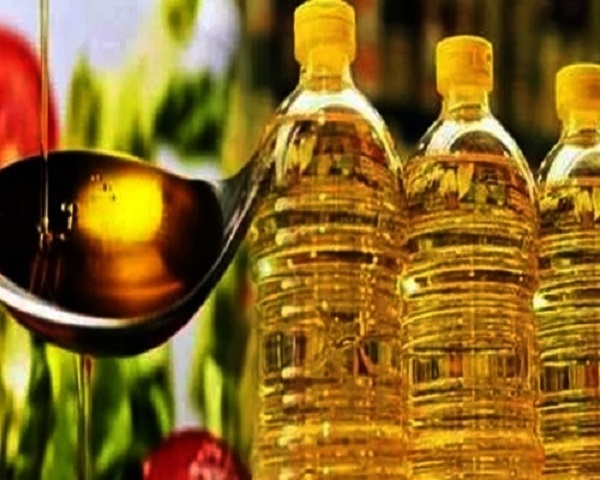New Delhi, (Samajweekly) The Modi government is now planning to work on mission mode to reduce the dependence of the country on edible oil imports, under which it would be increasing production of edible oil from various sources along with spreading public awareness for economical consumption of oil.
According to experts, the objective of this new mission of the Modi government is not only to bring self-reliance (‘Aatmanirbharta’) in edible oils but also to transfer money to farmers on the expenses incurred on the oil imports.
Prime Minister Narendra Modi on Saturday during the meeting of the sixth governing council of the Niti Aayog also mentioned that despite being an agricultural country, India imports edible oil worth nearly Rs 65,000-70,000 crore annually. The Prime Minister said this money spent on imports could be transferred to the bank accounts of farmers in the country.
We are talking about the ‘National Mission on Oilseeds’, on which there is a plan to spend nearly Rs 19,000 crore in the next five years. A senior official of the Union Ministry of Agriculture and Farmers Welfare said the preparations for the mission are foolproof and would be implemented from April 1 in the upcoming financial year.
India imports nearly 150 lakh tonnes of edible oil every year while domestic production is nearly 70 to 80 lakh tonnes. With the growing population of the country, consumption of edible oil would also increase moving ahead. In such a situation, bridging the huge gap between the edible oil imports and the domestic production by achieving ‘self-reliance’ in edible oil is a major goal. But Trilochan Mohapatra, Director General of the Indian Council of Agricultural Research (ICAR), says that when work is undertaken on mission mode, there is a greater chance of achieving success in it.
He said to increase the production of oilseeds in the country, along with acreage, more emphasis would be given on increasing productivity.
Mohapatra told that in the eastern region of the country, there are nearly 110 lakh hectares of land, which remains vacant after taking out the paddy crop, it can increase its area by growing mustard. In addition, farmers are encouraged to cultivate pulses and oilseeds instead of crops like paddy, wheat and sugarcane in Punjab, Haryana including northern India where there is scarcity of water.
Mohapatra said like paddy and wheat, if farmers get the Minimum Support Price (MSP) for oilseeds and high yield seeds are available then their interest in cultivating these crops would increase.
He told that according to the study conducted by ICAR, there are 20 agro ecological regions in the country.
Mohapatra said that varieties of seeds are prepared for cultivation of suitable crops in climate of a particular region, which increases the yield. He said that India imports palm oil the most, but the emphasis is now on increasing palm cultivation in the country, which would help in bringing ‘Aatmanirbharta’.
A total of nine oilseed crops are cultivated in India every year. Their annual production has been exceeding 300 lakh tonnes for the last four years and is increasing year by year. These include such oilseeds and oils which are used only in industries, but most of them are used as edible oils.
Director ICAR-Directorate of Rapeseed-Mustard Research, Bharatpur (Rajasthan), P.K. Rai, said there is great potential to increase the production of oilseeds in the country and mustard can be seen as an example of this. He said that the emphasis on mustard cultivation in mission mode has increased the acreage this year and production could be between 110 to 120 lakh tonnes.
Agriculture Ministry official said that in the next five years, the production of oilseeds in the country could double.
Apart from seasonal crops, oil is obtained from the seeds of some evergreen trees in the country. Then, there are also secondary sources of oil. A senior Agriculture Ministry official said the goal of development has been set at every level. Four sub-missions have been made under the ‘National Oilseeds Mission’ which are as follows:
Firstly to increase the production of oil from primary source. Under this it is planned to increase production of soyabean, mustard-rapeseed, groundnut, sunflower, sesame, safflower and ramtil.
Secondly to increase the production of oil from secondary source and under it crop which is not produced mainly for oil, but oil comes from it as a by-product. For example, cotton oil, linseed oil etc.
Thirdly setting up of processing units in oilseed production areas wherein the areas where oilseeds are produced, provision has been made to set up processing units so that farmers can get a fair price of their crops.
Fourthly to create awareness campaign to make people aware of the benefits of economical consumption of oil.
Experts point out that oil consumption is steadily increasing with the country’s growing population, but a research by the Indian Council of Medical Research (ICMR), advises a person to consume 30 grams of oil daily. Adhering to this ICMR study, the annual oil consumption per capita should be nearly 11 kg of oil. Whereas according to the 2017 report, the per capita oil consumption in the country is 19.3 kg.



